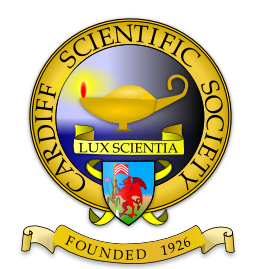☰ Cardiff Scientific Society


Microwave Magic
Dr Peter Barham
University of Bristol

Cod Liver Oil - How Can It Be Good for You?
Professor John Harwood
Cardiff University

London Pollutant Smogs: Why do they Kill?
Professor Roy Richards
Cardiff University

The Lord Phillips Memorial Lecture: Molecular Horticulture - Will it Grow in the Future?
Professor T. Michael Wilson
University of Warwick

101 Uses of a Quadratic Equation
Professor Chris Budd
University of Bath/Royal Institution

From Gene Discovery to Clinical Trial
Professor Julian Sampson
Cardiff University

Describing the Undescribed: Towards a Biodiversity Agenda
Dr Graham Oliver
National
Museums & Galleries of Wales, Cardiff

Disabled and Able-bodied Paddlers: an Inclusive Sea Kayak Expedition from Vancouver to Juneau (Alaska)
Mr Adrian Disney
United World College of the Atlantic, Llantwit Major, Vale
of Glamorgan

Recombinant Antibodies and the Diagnosis of Veterinary Diseases
Professor Garry Whitelam
University of Leicester

Atmospheric Chemistry and Climate, a Coupled System
Professor John Pyle
Cambridge University

Life, Death and the Tomato
Professor T. George Truscott
Keele University
